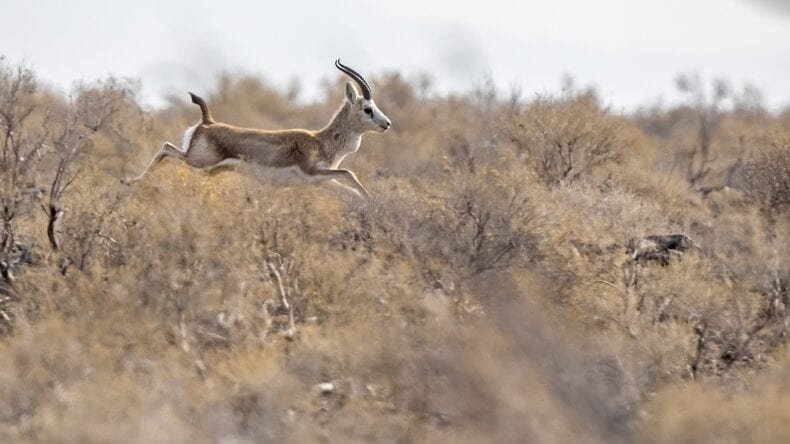In a recently-compiled report for the International Union for the Conservation of Nature (IUCN), the world’s largest conservation organization hailed the achievements of various small projects implemented in Kazakhstan to better study and protect one of the region’s most treasured animals.
The goitered gazelle is a symbol of Central Asia’s rugged mountains and wide open steppes, and ensuring their populations flourish means that the region’s wilderness at large will likely follow.
The gazelles face numerous threats, from poaching to habitat fragmentation, and the seven action plans in the IUCN’s Save Our Species Central Asian program were designed to address all of them.
To fund the work that ranged across thousands of square miles, a mere 500,000 CHF, or $560,000, was set aside. One such program that aimed to improve conditions within a wildlife migration corridor for goitered gazelles was able to accomplish major goals such as a doubling in the number of gazelles, after being awarded just $28,000.
Conservation work is famous for suffering small budgets for anything that isn’t flagship efforts to protect the most iconic wild animals, and the SOS Central Asia program is a testament to resourcefulness.
The goitered gazelle (Gazella subguterosa) naturally migrates over vast distances to find enough food and water, but as the countries in Central Asia gradually modernize, their historic migration routes are sometimes bisected by roads, railways, fences, and oil pipelines.
The program seeking to improve habitat in a critical migratory corridor between Ile-Balkhash Reserve and Altyn-Emel National Park in Kazakhstan managed to double the number of gazelles, from 123 to 248, passing through the study area through a mixture of approaches.
To start, they put up informational billboards along highways explaining the value of gazelles to the ecosystem, while publishing two mini-docs on a popular television series “Outdoor Kazakhstan”. More traditionally, they were able to develop four of ten identified underground wells to improve water access for the gazelles, and organized 500 square kilometers of antipoaching ranger patrols.
This was all done on a budget that would normally not even be enough to cover office supplies if the project were done by the US Fish and Wildlife Service.




